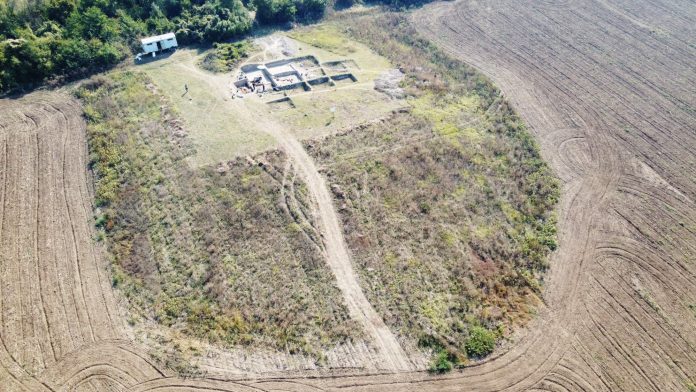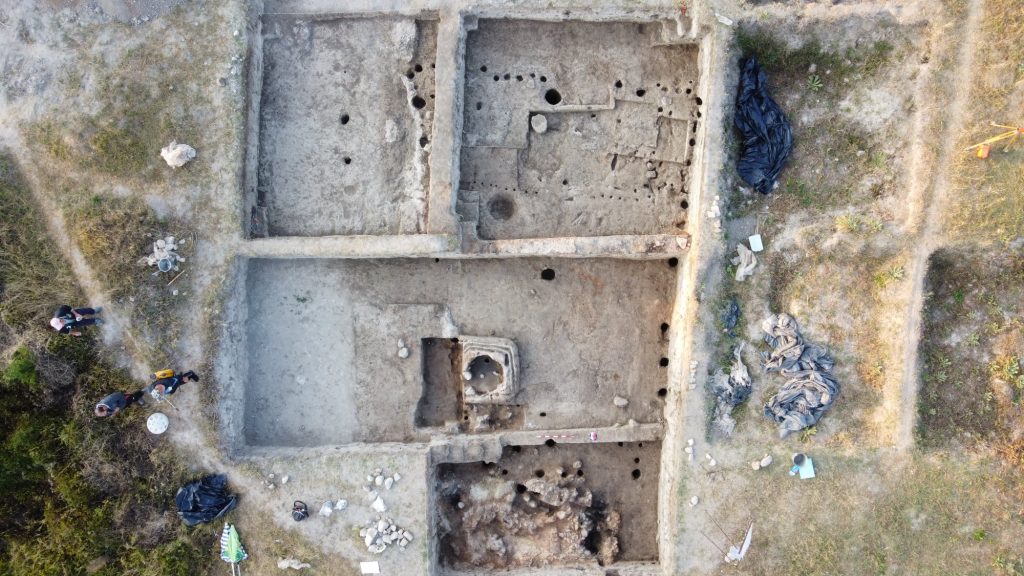
Two kilns dating back to the Copper Age 7,000 years ago and dozens of artifacts have been unearthed in northeast Bulgaria, another clue to life in the area which was home to one of the world’s oldest civilizations.
The furnaces which archaeologists estimate were made between 4800 and 4600 BC appear to have come from a prehistoric pottery-making center in the Bazovets settlement mound in northeast Bulgaria, archaeology in Bulgaria reported.
The prehistoric settlement is located near the town of Bazovets, close to the River Danube which forms the border with Romania.
Europe’s first prehistoric civilization also known as “Old Europe” lived in what is today’s Bulgaria, Romania and Serbia, stretching from the lower Danube valley to the western coast of the Black Sea.
This prehistoric civilization came between the Neolithic and Bronze Age had the world’s oldest gold, Europe’s oldest town and some of the earliest forms of pre-alphabetic writing, the publication reported.
The era predates the famous civilizations of Minoan Crete, Mycenaean Greece, Ancient Egypt and Ancient Mesopotamia by thousands of years.
the first kiln was partly excavated in 2019 and the excavation was completed in September, the Ruse Regional History Museum said.
The second prehistoric kiln had a lower chamber for the fire and and an upper chamber for the baking of the pottery items.
It was 1.2 meters long, and one meter wide, and made of wood wattle plastered with a thick layer of clay from the inside and outside.
The kiln had a groove that would allow for the regulating of the heating temperature, a type of furnace for baking clay that was used in later archaeological eras, the Ruse History Museum said.

The dig was led by archaeologist Dimitar Chernakov from the museum and archaeologist Irena Ruseva of the Svilengrad History Museum. Archeologists of the Dobrich Regional History Museum and the Veliko Tarnovo “St. Cyril and St. Methodius” University also took part.
A total of 57 archaeological artifacts from the Early Chalcolithic period (4,800 – 4,600 BC) have been found during the excavation.
The artifacts were made of flint, animal bones, horns, and ceramics, and included fragments from anthropomorphic and zoomorphic figurines.
The periphery of the prehistoric settlement was used for manufacturing, archaeologists said.
The archaeologists also discovered the ruins of a rectangular building, containing a small room that was probably used to store food. Researchers unearthed traces of animal bones and shells from freshwater molluscs.
In addition to the nearly 7,000-year-old kilns, archaeologists found a prehistoric building, even older than the kilns which was made of wood and clay, and was destroyed by a large fire.


















